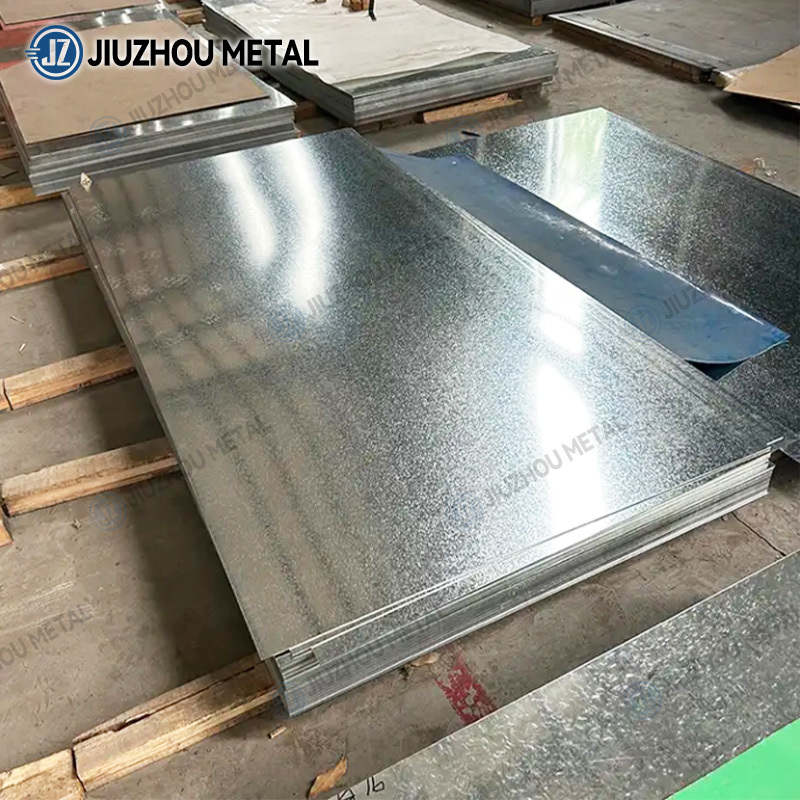Galvanized Sheet Market Sees Sustained Growth Amidst Rising Demand for Corrosion-Resistant Materials
Release time:
2025-08-06
In recent years, the global construction and manufacturing industries have witnessed a significant transformation with an increased focus on durability, sustainability, and cost-efficiency. One material that continues to gain momentum in this evolution is the galvanized sheet. Known for its corrosion-resistant properties, galvanized sheet has become an essential material in a wide range of applications, including infrastructure development, automotive manufacturing, appliance production, and agricultural equipment.
A galvanized sheet is a steel or iron sheet coated with a layer of zinc to protect the base metal from rusting. The galvanizing process creates a barrier that not only prevents oxidation but also provides a sacrificial layer to enhance longevity. The zinc coating bonds tightly with the steel surface, offering both mechanical resilience and chemical resistance, which are critical for long-term usage in harsh environments.
According to recent market analysis, the demand for galvanized sheet has grown consistently across multiple sectors. In the construction industry, galvanized sheets are extensively used in roofing, wall systems, support beams, and ducting. Their resistance to moisture and environmental wear makes them a preferred choice for both residential and commercial projects. Similarly, in the automotive sector, galvanized sheet is commonly used in body panels, frames, and structural components due to its lightweight strength and corrosion protection.

Manufacturers are also leveraging galvanized sheet in producing consumer appliances such as refrigerators, washing machines, and microwave ovens. The material’s clean finish and durability make it ideal for products that require both aesthetics and performance. Additionally, the agricultural sector relies on galvanized sheet for silos, fencing, storage units, and irrigation systems that must endure outdoor exposure for extended periods.
One of the key factors driving the galvanized sheet market is the push for environmentally friendly materials. Galvanized steel is fully recyclable and has a long life cycle, reducing the need for frequent replacements and lowering the carbon footprint of construction and production activities. In response, manufacturers are investing in more energy-efficient galvanizing technologies and sustainable production practices to align with global climate initiatives.
Asia-Pacific remains the largest consumer of galvanized sheet, with China, India, and Southeast Asia experiencing rapid urbanization and industrial growth. These regions are investing heavily in infrastructure development, further boosting the demand for reliable and cost-effective building materials like galvanized sheet. North America and Europe are also seeing a rise in demand, particularly in automotive and renewable energy projects.
Technological advancements have further enhanced the performance and versatility of galvanized sheet. Modern coatings now include additional layers such as alloyed zinc-aluminum or zinc-magnesium to increase corrosion resistance and adaptability in marine or industrial settings. Some manufacturers are also developing pre-painted galvanized sheets to cater to customized architectural and commercial needs.
However, challenges such as fluctuating raw material prices, environmental regulations, and global trade dynamics can affect the galvanized sheet industry. Steel prices, in particular, have seen volatility, which impacts the production costs of galvanized products. Despite this, industry experts remain optimistic, pointing to the increasing demand for sustainable and long-lasting materials as a long-term growth driver.
Looking forward, the galvanized sheet market is expected to grow at a steady pace over the next decade. As industries continue to prioritize sustainability and structural integrity, galvanized sheet will remain a crucial solution. Innovations in coating technology, expansion into emerging markets, and increased recycling efforts will further solidify its role in the global material supply chain.
Latest News
Unlocking the Benefits of Carbon Steel Coils in Building Projects
Unlocking the Benefits of Carbon Steel Coils in Building Projects Table of Contents 1. Introduction to Carbon Steel Coils 2. Properties of Carbon Steel 3. Advantages of Using Carbon Steel Coils in Construction 4. Applications of Carbon Steel Coils in Building Projects 5. Manufacturing Processes of Carbon Steel Coils 6. Sustainability and Environmental Impact 7. Cost-Effectiveness of Carbon Steel
2025-07-31
Understanding Carbon Steel Coils: Essential Insights for the Construction Industry
Carbon steel coils are versatile and widely used materials in the construction and decorative sectors, particularly in building steel and structural components. Understanding their properties and applications is crucial for industry professionals looking to enhance project efficiency and structural integrity. ### Properties of Carbon Steel Coils Carbon steel coils are composed primarily of iron an
2025-07-26
Why Carbon Steel Coils Are Essential for Modern Construction
Why Carbon Steel Coils Are Essential for Modern Construction Table of Contents Introduction to Carbon Steel Coils Properties of Carbon Steel Coils Applications of Carbon Steel Coils in Construction Advantages of Using Carbon Steel Coils Sustainability and Environmental Impact Carbon Steel Coils vs. Other Materials The Future of Carbon Steel Coils in Construction Frequently Asked Q
2025-07-21
Understanding Corrosion Resistance: The Superiority of INCOLOY Alloy 825 Table of Contents Introduction to Corrosion Resistance What is INCOLOY Alloy 825? Corrosion Resistance Properties of INCOLOY Alloy 825 Applications of INCOLOY Alloy 825 in Construction Benefits of Using INCOLOY Alloy 825 Comparative Analysis with Other Alloys Maintenance and Care for INCOLOY Alloy
2025-06-07
Understanding Discount API 5L X80 Carbon Welded Steel Pipe in Construction
Discount API 5L X80 carbon welded steel pipes are essential components in a variety of construction applications, characterized by their high strength and resistance to harsh environmental conditions. These pipes are often utilized in the transportation of fluids and gases, making them crucial for projects involving oil and gas infrastructure, water supply systems, and industrial processes. The de
2025-06-06



